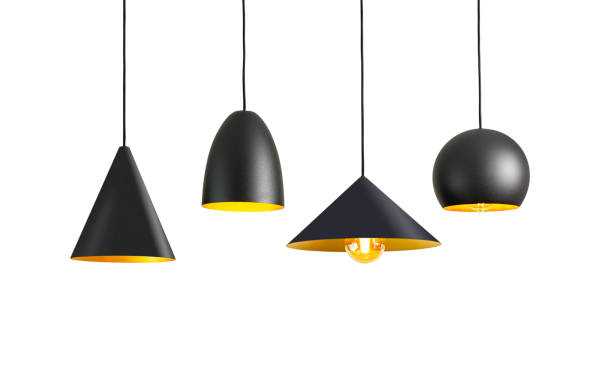Understanding Chandeliers and Their Place in Homes
Chandeliers are hanging lights that have been used for centuries to brighten up rooms and add style. They come in many designs, from simple shapes to detailed glass and crystal patterns. In this article, you will learn how chandeliers are made, how they spread light, and why people choose different styles for dining rooms, halls, and living spaces. By exploring their history and design, you can see how chandeliers mix function with decoration in everyday life.

The Rich History of Chandeliers
Chandeliers trace their origins to medieval times when simple wooden crosses held candles in churches and monasteries. By the 15th century, more elaborate designs emerged for nobility and aristocracy. The 17th century marked a significant evolution with the development of lead crystal in England, which revolutionized chandelier design through its superior light-reflecting properties. The Palace of Versailles under Louis XIV popularized crystal chandeliers as symbols of wealth and power, featuring massive fixtures with hundreds of candles illuminating the Hall of Mirrors. The 18th century introduced neoclassical styles, while the Industrial Revolution democratized chandeliers through mass production techniques. Each historical period contributed distinctive elements to chandelier history, from baroque opulence to streamlined art deco interpretations.
Exploring Different Types of Chandeliers
Today’s market offers a diverse array of chandelier styles suited to various architectural contexts and personal preferences. Traditional crystal chandeliers feature multiple tiers of glass or crystal arms with elaborate detailing, offering timeless elegance. Modern chandeliers embrace minimalist aesthetics with geometric shapes, unexpected materials, and artistic expressions. Transitional designs bridge the gap between traditional and contemporary styles, offering versatile options that complement diverse interior schemes. Other specialized types include tiered chandeliers with multiple levels of lights, sputnik chandeliers with starburst configurations inspired by mid-century modern design, drum chandeliers that combine pendant and chandelier elements, and rustic chandeliers crafted from natural materials like wood, antlers, or wrought iron. Empire chandeliers present a distinct shape with a wider top that narrows toward the bottom, often featuring crystal beading.
Elements of Chandelier Design
Successful chandelier design balances proportion, material selection, and light quality. Scale considerations are paramount—fixtures should be proportionate to room dimensions, typically measuring 2-3 inches in diameter for every foot of room width. Hanging height depends on ceiling height and room function; in dining spaces, chandeliers generally suspend 30-36 inches above tables. Material choices significantly influence character and light diffusion, with options ranging from crystal and glass to metal, wood, fabric, and contemporary materials like acrylic or recycled elements. Light sources have evolved from candles to incandescent bulbs to LED technology, offering varied illumination quality and energy efficiency. Style consistency between chandelier design and interior architecture creates visual harmony, while thoughtful details like arm configuration, chain design, and decorative finishes contribute to the fixture’s overall impact and personality.
The Enduring Appeal of Crystal Chandeliers
Crystal chandeliers remain among the most sought-after lighting fixtures for their exceptional light-reflecting qualities and timeless elegance. The prismatic effect of crystal components creates a dazzling play of light that transforms spaces through rainbows of refracted illumination. Various crystal types offer different optical properties and price points, from hand-cut lead crystal with the highest refractive index to machine-cut crystal, crystal glass, and optical glass alternatives. Historic manufacturers like Waterford, Baccarat, and Swarovski have defined excellence in crystal chandelier craftsmanship, each developing signature cutting techniques and compositions. Contemporary crystal chandeliers reinterpret traditional designs through modern sensibilities—incorporating cleaner lines, mixed materials, and unexpected forms while maintaining crystal’s inherent luminosity. Proper maintenance, including regular gentle cleaning and occasional professional servicing, preserves both the beauty and value of these investment pieces.
Chandelier Lighting Techniques and Effects
The transformative power of chandelier lighting extends beyond the fixture itself to its interaction with space. Strategic placement maximizes both functional illumination and decorative impact—entry foyers provide dramatic first impressions, dining areas benefit from warm focused light, and unexpected locations like bathrooms or walk-in closets gain luxury through chandelier installation. Layered lighting approaches integrate chandeliers with complementary light sources like recessed lights, wall sconces, or table lamps for balanced illumination. Dimming capabilities enhance versatility, allowing adjustment from practical task lighting to atmospheric ambient glow. Light temperature selection influences mood—warmer tones (2700-3000K) create intimacy while cooler temperatures provide clearer task lighting. The interplay between chandelier design and room architecture can emphasize architectural features, create visual focal points, or establish spatial rhythm through thoughtful placement and scale consideration.
Selecting the Right Chandelier for Your Home
Choosing an appropriate chandelier involves balancing aesthetic preferences with practical considerations. Room-specific guidelines help determine suitable styles and dimensions—formal dining spaces traditionally feature crystal or traditional designs, while casual areas accommodate more relaxed interpretations. Size calculations provide starting points: for dining areas, chandeliers typically measure 12 inches narrower than the table width, while for rooms generally, adding the room dimensions in feet and converting to inches offers an approximate diameter guideline. Ceiling height significantly impacts selection, with taller ceilings accommodating tiered or more substantial fixtures. Budget considerations span from affordable mass-produced options to custom artisan pieces, with quality, materials, and craftsmanship influencing price points. Installation requirements should be evaluated early in the selection process, addressing electrical capacity, structural support, and potential professional installation needs to ensure both safety and optimal placement.
Conclusion
Chandeliers transcend their functional role as lighting fixtures to become architectural jewelry that defines interior spaces. Their evolution from medieval candle holders to contemporary design statements reflects changing technologies, materials, and aesthetic sensibilities while maintaining their essential purpose: to illuminate spaces with beauty and presence. Whether chosen for historical authenticity, dramatic impact, or subtle sophistication, chandeliers continue to captivate through their unique ability to transform light into art, making them enduring elements in residential design. The perfect chandelier balances form and function while expressing personal style, creating a luminous focal point that elevates the entire atmosphere of a home.




